Chronology
- 1128. At the battle of São Mamede (near Guimarães in the North of today’s Portugal), Afonso Henriques, Count of Portugal[1], son of count Henry of Burgundy of the Capet family ruling France, who had come to Iberia before the turn of the century to assist the locals in their fight against the Moors, defeated his mother, Countess Teresa – daughter of Afonso VI, king of León and Castille, and her lover, Fernão Peres de Trava (of Galicia, today’s Spain), in battle – thereby establishing himself as sole leader. Apparently some of the noblemen of the region resented the cut of the privileges they were being subjected to by the Teresa-Trava pair and got rid of them with the assistance of barely 20 year old Afonso, who after the won battle allegedly put his mother under house arrest in neighboring Póvoa do Lanhoso. Some say the day of the battle, June 24, 1128, is the true independence day of Portugal, and not 1143 as usually acknowledged.
[1] Portucalense county, “a name that may come from (the Holy) Calice (Chalice), one of the palaeo-Christian symbols that were particularly worshiped by the Cathars and the Templar Knights. According to some theses Portus Calixis (the same as Porto Grail) = Portugal.” (Barreto 1992, p.8)
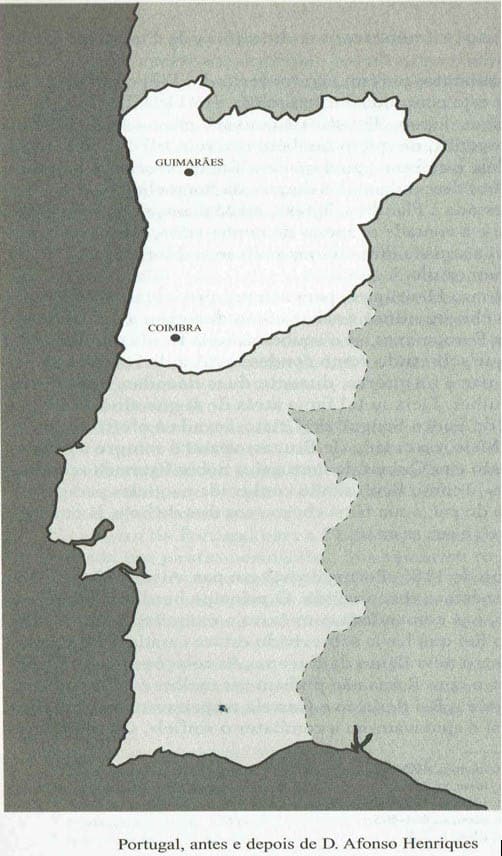
- 1139. Afonso Henriques proclaimed himself (first) king of Portugal after the Battle of Ourique against the Moors somewhere in the south of today’s Portugal and was acclaimed at the first gathering of the Cortes (parliament) and recognized as such in 1143 by Afonso VII, king of León and Castile, and in 1179 by Pope Alexander III.
- 1143. Accepted by many as the year of Portugal’s independence, because it was on the 5th of October of this year that the treaty of Zamora was signed,[1] but which was officially recognized by the pope only 36 years later in 1179.
- 1147. Lisbon is taken from the Moors with the important assistance of mostly North European crusaders on their way to Palestine. Local Christian bishop is beheaded, and many Christian residents are slaughtered too.[2] Lisbon’s first bishop nominated thereafter was an Englishman.
- 1170. After facilitating the integration of North-European cruzaders in the local Portuguese communities, Afonso Henriques issues a letter of confort in favour of the Moors living in the Lisbon, Almada, Palmela and Alcácer areas, so that no arm is unjustly inflicted to them.[3]
- Official recognition by Rome, i.e. by the pope, of Afonso Henriques as a king of an independent Portugal.
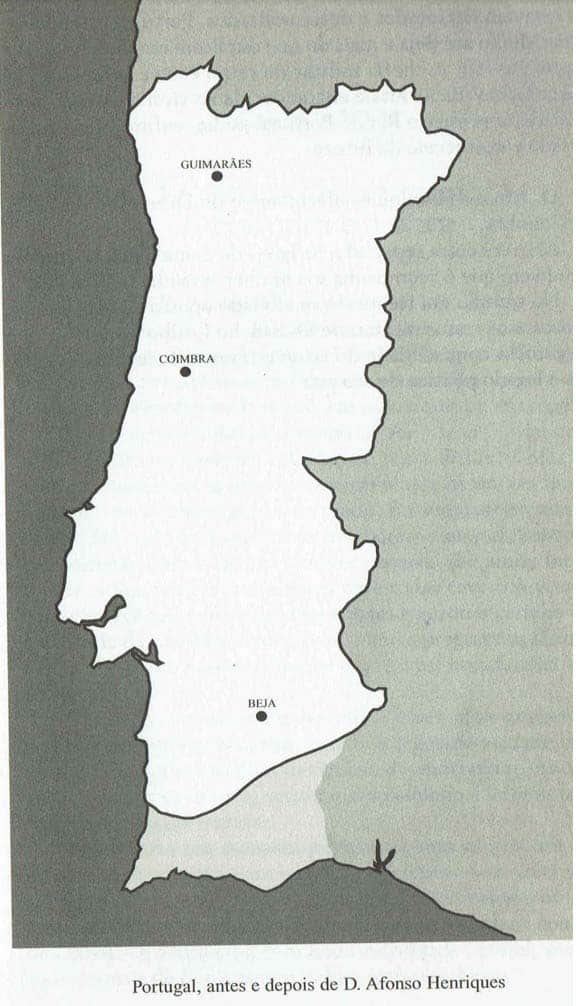
- 1249. Portugal’s final European continental borders practically established with the conquest of the kingdom of the Algarve(s), its southernmost province, by King Alphonse III, so ending what some call the crusade in Portugal. (Granada in the south of today’s Spain only falls to the Catholic monarchs in 1492, the same year Columbus reaches the Antilles, bringing the Castilian crusade to a close some 243 later than the Portuguese one). Portugal had established its modern day’s continental borders as one of the oldest European nations.
1288 or 1290. Today’s University of Coimbra was founded in Lisbon by King Dennis as ‘General Studies’, and was based here in 1290-1308, 1338-54, and 1377-1537. Based in Coimbra in the intervening years and ever since 1537, it is ranked as the 13th oldest extant university in the world.
- 1297. Alcanizes Treaty recognizes Portugal’s current international borders with Castille (Spain).
- 1319. The Bull Ad ea ex quibus transforms the Portuguese Order of the Temple, under persecution and extinction in the rest of Europe, into the Order of Christ, which later under Prince Henry’s Administration, “functioned in symbiosis with the fleets of the Discoveries, its wealth helping in the discovery of new lands.” (Barreto 1992, p.43)
- Commercial treaty signed in London granting Portuguese fishermen from Lisbon and Porto the access to British harbors.
- 1353. Commercial treaty between Edward III of England and Portuguese merchants and fishermen.
- 1373. Portugal celebrated with England a treaty, some confuse this with the treaty of Windsor (1386), which is allegedly the longest-standing alliance in the world and by which both allies agreed to help one another against all enemies.
1383-5. First burgeois revolution in Europe, when merchants and other middle and lower classes allied with a large part of nobility against the Spanish/Castillian pitch to the Portuguese throne.
- 1386. The Treaty of Windsor sealed the alliance that first started in 1294, and was confirmed at Aljubarrota with a pact of perpetual friendship between the two countries. The next year, John of Gaunt, duke of Lancaster, son of king Edward III of England, and father of king Henry IV of England, landed in Galicia with an expeditionary force to press his claim to the Crown of Castile with Portuguese aid. He failed to win the support of the Castilian nobility and returned to England with a cash compensation from the rival claimant. John of Gaunt left behind his daughter, Philippa of Lancaster, who married king John I of Portugal in order to seal the Anglo-Portuguese alliance. By this marriage, celebrated in 1387, John I became the father of a generation of princes called by the poet Luís de Camões, the “marvellous or magnificent generation” (Ínclita Geração), who led Portugal into its golden age, during the period of the Discoveries.[1]
1405 – 1433. The Chinese admiral Cheng-ho sailed seven times to Southern Asia, reaching as far as the Red Sea and the East African coast (Wolf 1982, p.24), some allege as far as America and the South Pacific (Menzies 2002).
- 1412. For the Portuguese expansion overseas it all started with the preparations for the seizure of Ceuta,[2] – the then most important maritime town of Maroco[3] – accomplished 1415[4] by King John the First and 3 of his and his wife’s (Queen Philipa of Lancaster, daughter of England’s John of Gaunt) sons, as well as a good part of Portuguese nobility – including Nuno Álvares Pereira – the same year of the battle of Azincourt, and only a couple of years before Chinese ships set sail to explore the Indian Ocean and reach the east coast of Africa between 1417 and 1419[5]. The three infants, Duarte, Pedro and Henrique (later known as Henry, the Navigator) were knighted on this occasion.
1419 (ca.). the Portuguese sight the uninhabited archipelago (2 islands) of Madeira.
Between 1420 and 1460 Portuguese merchants and financiers fund a series of sailing voyages down the west coast of Africa in search of gold, slaves and Christians. Madeira (1419, or 1420), the Azores (1427), and the Canaries are all discovered or rediscovered by 1432; 1436 the Portuguese reached Rio do Ouro, Cape Branco in 1441, by 1444 (or 1445, or 1446?) they have reached Cape Verde, between 1445 and 1448 they built a fort and a warehouse on Arguim island off Mauritania, by 1460 they have arrived in Sierra Leone and reached the coast of Guinea, the Gold Coast in 1481, the Congo in 1482-3 and in 1487-8 the Cape of Good Hope, first baptized Cape of Torments by Bartolomeu Dias. Limited settlement, sugar cultivation, and slave trading begin.
1427 (ca.). the Portuguese sight the uninhabited archipelago (9 islands) of the Azores.
1433-4. Gil Eanes sails beyond the West African Cape Bojador “in the service of the Portuguese prince Henry the Navigator. Sailing from Lagos [Algarve, Portuguese southern coast], Eanes made an unknown number of voyages along the African coast. In his voyage in 1433, he sailed along the coast of Africa and reached the Canary Islands. He was the first to sail beyond Cape Bojador in 1434 and return, by making a wide turn. The discovery of a passable route around Cape Bojador marked the beginning of the Portuguese exploration of Africa.” (Wikipedia as of January 21, 2008) “Outside of Portugal his name is little known today. But if ever a man made ‘one small step for a man, one leap forward for mankind’ it was Gil Eannes in that memorable voyage. The passage of Cape Bojador was one of the great turning-points in human history. … To Portugal, this was the unfolding of her Manifest Destiny.” (McIntyre 1977, p.10)
- 1437. Portuguese are defeated while trying to conquer Tangier (Morocco) and their leader, Infante D. Henrique, leaves his brother – also the king’s son, Fernando – behind as a token they would comply with their promise of handing Ceuta back to the Moroccans, something they never complied with. D. Fernando, died in captivity in Fez in the year of 1443.
- 1441. First two slaves apprehended South of Cape Bojador, soon followed by another 10.
- First large group of black African slaves come on shore in Lagos, Algarve, South Portugal.
- 1445. The first Portuguese trading post (feitoria) in black Africa was established at Arguin, off the coast of Mauritania. In the same year was founded the feitoria in Flanders, first in Bruges and later (from 1488) in Antwerp, till it was dissolved in 1549 in the face of a huge deficit/liabilities (passivo).
1455-65. Construction of a fortress on the island of Aboim, West-African coast.
- 1456. Discovery of the uninhabited archipelago of Cabo Verde.
- 1458. Conquest of Alcácer-Ceguer in North Morocco.
- 1460. Death of Prince Henry, the Navigator, which slowed down the navigational impetus for a couple of decades.
1470s. First Catholic church, chapel of Our Lady of Conception built in the tropics by the Portuguese in Cidade Velha, Cabo Verde.
1470 (or 1472?). The islands of São Tomé and Principe in the Gulf of Guinea were discovered by the Portuguese.
- 1471. Fernando Pó discovers the island named after him at the mouth of the Niger. Arzila (Assilah), followed shortly by Larache and Tangier, are occupied by the Portuguese on the Atlantic coast of Morocco.
- 1474. An explorer named João Vaz Corte-Real received a captaincy in Azores because he discovered Terra Nova dos Bacalhaus (New Land of Codfish) in 1472. Some claim this is Newfoundland (Terra Nova). (Wikipedia as of Oct.11, 2007)
- 1479. “Treaty of Alcáçovas/Toledo, named after the Portuguese and Spanish towns were it was signed/ratified by respective authorities, is signed between Portugal and Spain, giving Canary Islands to Spain, and Fez (Morocco), the African coast and islands to Portugal.” The parallel line passing at the south of the southern-most island of the Canaries was the dividing line, south to Portugal and North – except for Madeira and Azores archipelagos – to Spain.
[1] From Wikipedia as of April 7, 2008.
[2] The last Byzantine possession in the area, around the year 710, and allegedly the same harbor town General Tarik ibn Ziyad (al Gibral) has used in order to embark his 7,000 troops to invade the Iberian Peninsula in August of the year 711, after defeating Roderick, the Gothic King of Spain. “After the invasion of 711, other waves of Moors even blacker in colour arrived. The occupation of Portugal during this period accounted for the fact that even noble families had absorbed the blood of the Moor. Racial mixing in Portugal, Spain and elsewhere throughout Europe, which was under the influence of the Moors, took place on a large scale from that point onward. The Moors were responsible for darkening the whites of these areas, Portugal in particular, which became the first model of a Negroid Republic in Europe.
That is why historians claim that Portugal is in reality a Negroid land, and Napoleon pointed out that Africa begins at the Pyrenees. Eventually the miscegenation (intermarriage) of Blacks and whites led to the disappearance of the Black or Negroid skin colour in Europe.” (John Moore, “Black Moors” in http://members.tripod.com/jrmoore1958/moors.html as of March 28, 2008) The Portuguese were (are) also called by some the “kaffirs of Europe”.
[3] António Borges Coelho “Raízes da expansão portuguesa”, Prelo, Lisboa, 1976, p.17
[4] Portugal was the first European colonial power in Africa (1415) and the last to leave (1975).
[5] Rodrigues, António A. S. (coord.) “História Comparada. Portugal, Europa e o Mundo. Uma visão cronológica”, Círculo de Leitores, 1996
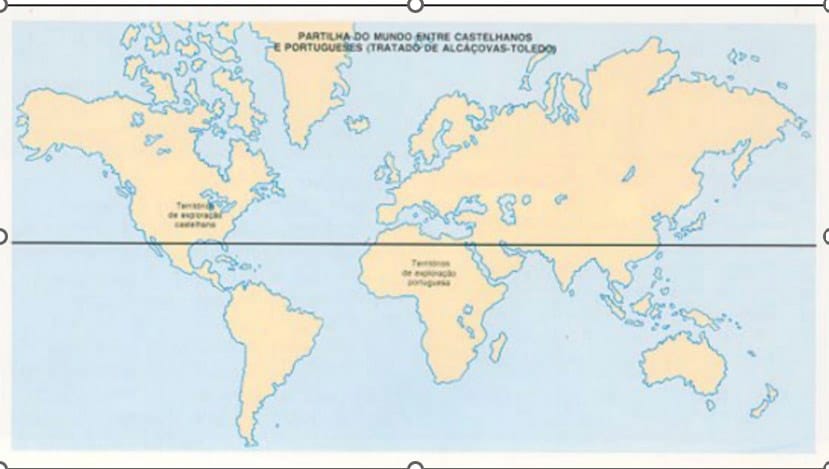
- 1482. The Portuguese built a fort at Elmina (Mina) in the Bight of Benim, and held on to it until the Dutch took it 1637, and initiated friendly diplomatic relations with the Manicongo, which lasted for more than a century.
- 1483. Diogo Cão sailed up the mouth of the Congo River and initiated a period of “friendly relations” between the kingdom of the Congo and the king of Portugal. (Wolf 1982, p.196)
- 1487. King John II sends Pêro da Covilhâ and Afonso de Paiva over land on the lookout for Preste João, the supposed Christian ruler of Ethiopia/Abyssinia. The two separate in Aden the following year. Afonso de Paiva, who was heading towards Ethiopia, dies shortly after, while Pêro da Covilhã reaches India by boat, having visited Calicute, Goa, Ormuz, Sofala, and back to Cairo 1490-91. Two Portuguese Jews, sent from Lisbon, join him here and convey back to Lisbon his reports, while he proceeds to Ethiopia. He is welcomed by the local ruler, who however keeps him from moving away, is visited by a few Portuguese before dying there.
- 1488. “Bartolomeu Dias rounds the Cape of Torments, later of the Good Hope, sails far enough up the coast of southern Africa to return with news that the route to the Indies is open.” His 3 caravels first reached nowadays Mossel, or Dias Bay, which he had named Saint Brás Bay, and explore the coast farther to the NorthEast, reaching what they called Infant’s River, or Great Fish River, where nowadays lays the mouth of Buffalo River, by East London, South Africa.
- 1491. The king of Congo is converted to Catholicism, and baptized as king John, followed by his son Dom Afonso I.
- 1492. 120 thousand Jewish people, or 20 thousand Jewish families would have entered Portugal after being expelled from Castela/Spain. Columbus reaches the Antilles, which he believed to be India. All of these islands lay south of the Alcáçovas dividing line. So, a new one had to be agreed upon between the Spanish and Portuguese kings, which happened 2 years later when the Tordesilhas Treaty was signed.
- Treaty of Tordesillas is signed by Portugal and Spain, dividing the world beyond Europe into Portuguese and Spanish spheres of influence along a north-south meridian in the Atlantic, 370 west of the Cape Verde islands.” It attached to Portugal the eastern part of what was to become known as Brazil, after in its original version the separation meridian was only set at 100 marine leagues west of the Cape Verde islands/archipelago. This has lead many to raise the suspicion that Brazil’s existence was already known by the Portuguese.[1]

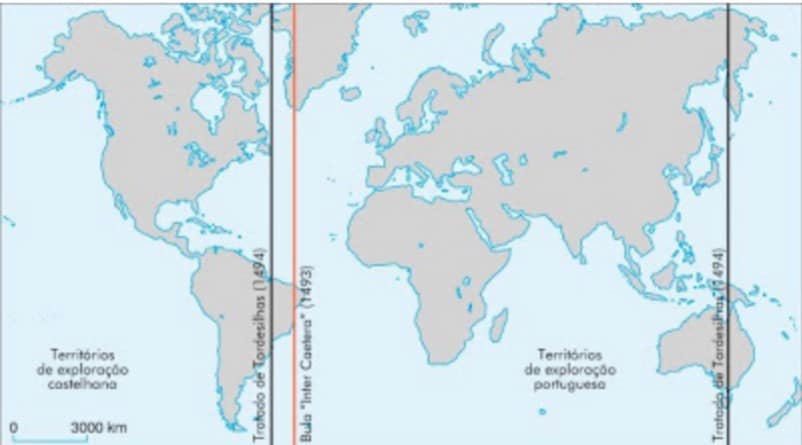
- 1496. Dom Manuel[1] expels those Jews that don’t accept to convert to Christianity and so to become “New Christians” (Cristãos Novos). It was a precondition to his marriage to the daughter of Ferdinand and Isabel, the Catholic monarchs of Spain, who had expelled the Jews from Spain in 1492. “In the process, the crown seized the ornaments and possessions of all synagogues and mosques…The premises of the religious establishments too were taken over, or reallocated; the great synagogue of Lisbon, for instance, became the church of Our Lady of Conception.” (Subrahmanyam 1993, p.43)
- 1498. Calicut, at the Indian Malabar coast, was reached by Vasco da Gama, “in search of mammonmammon”[2]. The Portuguese established an agency in Antwerp as early as 1498, even before they knew the outcome of Vasco da Gama’s first voyage to India. They aimed to sell the goods they had acquired along the Guinea Coast, including Malagueta pepper; in the event they were laying the foundations for the ‘golden age’ of Antwerp….Unlike the other foreign communities in Bruges and Antwerp, which were mostly branches of banks or private trading companies, the Portuguese feitoria, or ‘factory’, in Antwerp was set up by the Crown, which continued to appoint agents there.”[3]
- 1499. Portuguese factory (trade post) moved from Bruges to Antwerp.
- 1500. Brazil was officially discovered by Pedro Álvares Cabral, by chance – according to some – while en route to India, or – according to others – on purpose after the Tordesilhas meridian line was sufficiently pushed to the west in order to make a good part of our days’ Brazil to lie to the east of it. King Manuel I marries Maria, daughter of the Spanish Catholic monarchs, and accepts as their pre-condition to get Portugal rid of the Jews. He opts for forced mass conversions as a possible alternative to pure and simple eviction.
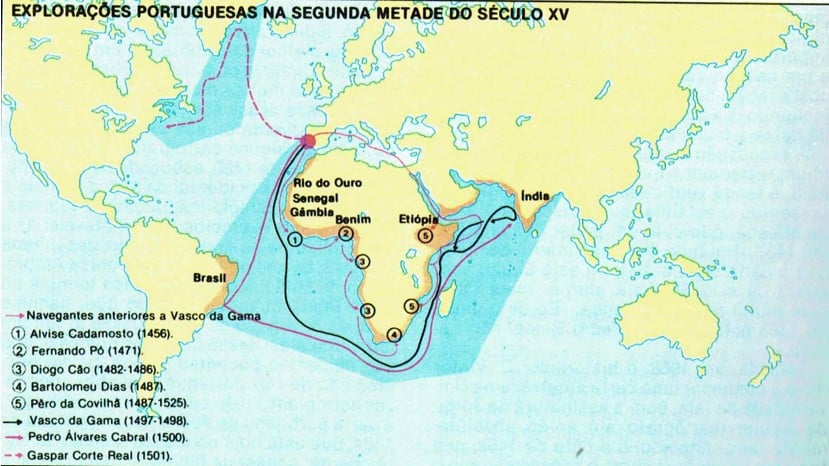
- Probable arrival of João da Nova at Ceylon, nowadays Sri-Lanka and then Tabrobana, as witnessed in the inscription left in the rock held at the Colombo’s Museum.[1]
- 1502. The Cantino planisphere (or Cantino World Map), the earliest surviving map showing Portuguese Discoveries in the east and west, is named after Alberto Cantino, an agent for the Duke of Ferrara, who successfully smuggled it from Portugal to Italy in 1502. It is arguably the earliest positively dated map of America and shows the islands of the Caribbean and the Florida coastline, as well as Africa, Europe and Asia, with considerable precision.
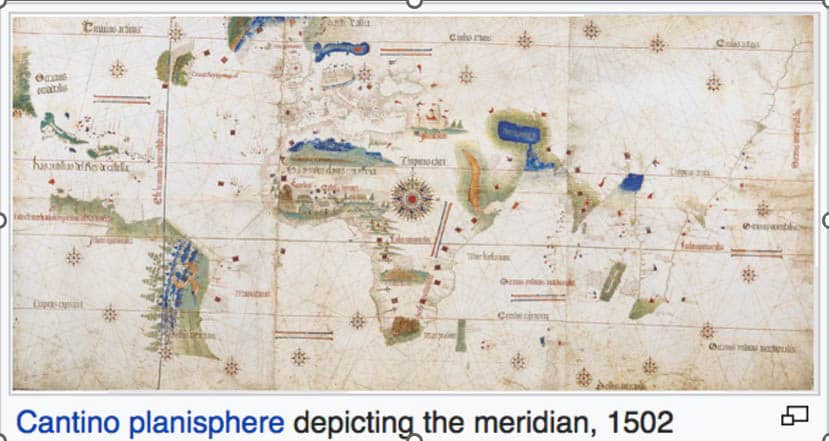
1503-4. Portuguese establish base at Cochin, on India’s south-western coast.
- 1505. Fort of Sofala built on the East African coast. King Manuel declares the spice trade to be a royal monopoly. Portuguese officially arrive at Taprobana (Ceylon)[1], where they stayed as the sort of dominant power for ca. 150 years. Melinde, Quíloa and Mombasa on East Africa (today’s Kenya and Tanzania) are taken by the Portuguese. Construction of the Portuguese fort in Agadir (Moroccan coast).
- 1506. From 2 to 5 thousand Jews are massacred in Lisbon in a series of riots apparently triggered by a disdainful comment about an alleged miraculous vision in the church of S. Domingos in downtown Lisbon. Construction of the Portuguese fort in Mogador (Moroccan coast), later abandoned in 1540. Tristão da Cunha, south atlantic uninhabited island is sighted by Portuguese sailors.
- 1507. The Portuguese occupy the coast of Oman and build their first fort in Mozambique.
- 1508. Safim (Moroccan coast) is conquered by the Portuguese.
- 1509. Francisco de Almeida leads the Portuguese fleet off the coast of Diu, India, to a victory over the Egyptian/Indian navy that had defeated the Portuguese at Chaul the previous year, establishing Portugal naval supremacy in the Indian Ocean. Diogo Lopes Sequeira reaches Malacca.
- 1510. Portuguese trade factory (feitoria) in Flanders moves from Bruges, where it was at least from 1411, to Antwerp, mostly for navigational reasons, i.e. loss of access to the harbour of Bruges through the river Zwin.
1510-11. The Portuguese, led by Governor Afonso de Albuquerque (1509-15) take Goa, which will remain under Portuguese control for 451 years, and which Albuquerque establishes 1530 as the Portuguese headquarters of the Estado da Índia (State of India), after transferring the capital there from Cochin.
- 1511. Albuquerque captures Malacca, which becomes the center for the distribution of Indonesian spices as well as an eastern naval base highly engaged in trade with China and Japan.
- 1512. Albuquerque dispatches António de Abreu and Francisco Serrão to sail to the Spice (Maluku, Mollucas, Malucas) Islands[2]; Abreu reaches the Banda Islands and Serrão, shipwrecked, reaches Ternate on local ships.
- 1513. Jorge Álvares travelled on a Malay junk [presumably from Malacca] to the islands off the coast of Catai/Cathay (China)[3], in the Chinese province of Guangdong. He engaged in very profitable businesses, exchanging natural products from tropical regions (such as pepper, cloves, benzoin and sandalwood) for Chinese goods (such as silk, porcelain, seed pearls, sulphur and saltpetre). The expressions ‘negócio da China’ and “árvore das patacas” – still used in Portuguese today – are synonymous with very lucrative trade/business and probably originated in those first Portuguese and Asian voyages to the coast of the southern provinces of the Celestial Empire.[4] City of Azamor, on the Moroccan coast is conquered by the Portuguese.
- 1515. Hormuz[5], in the Persian Gulf, is seized by the Portuguese – the shah of Persia becomes a Portuguese ally.
- 1517. King Manuel I would have sent a printing press to Abyssinia’s capital city Lalibela, together with a team of master printers.[6]
- 1518. “Henrique, a son of King Afonso I of the Kongo, who started his ecclesiastical career by taking minor orders in the diocese of Funchal (Madeira) – at the time the largest diocese in the world, incorporating parts of Africa, Asia and South America – became the first black African Catholic bishop in 1518.” [7]
- 1518. The king of Kotte grants the Portuguese permission to build a fort and establish trade at Colombo[8] on the island of Sri-Lanka.
- 1520. The Portuguese established a trading post on Solor in the village of Lamakera on the eastern side of the island off the eastern tip of Flores island in the Lesser Sunda Islands of Indonesia as a transit harbor between Maluku and Malacca.
- 1521. Ferdinand Magellan (Fernão de Magalhães) dies in the Philippines completing the first leg of the first circumnavigation of the globe in the service of the Spanish crown, which he had started in 1519. He offered his services to the Spanish monarch, trying to prove that the Moluccas were located on the Spanish half of the Tordesillas world.[9]
- 1522. Ferdinand Magellan’s crew establishes trade in the Moluccas/Spice Islands of Ternate and Tidore. The Portuguese build a fort at Ternate and acquired the monopoly of the trade in cloves, which at that time grew only on Ternate, Tidore, Amboyna and a few small islands.
- 1522. Ambassador designate to Peking/China, Tomé Pires, and members of his legacy, are arrested and/or left to die by Chinese authorities in the first big setback in Luso-Chinese relations, inspite of Chinese long tradition of diplomatic immunity. Chinese harbours are out of reach for Portuguese ships for several years, and only a few (3) were able to escape the Chinese navy to Malacca, in the previous year.
- 1525. “Sailing like Magellan under the Spanish flag, the Portuguese captain Estêvão Gomes explored the east American coast down to Chesapeake Bay.” (Kaplan 2006, p.28-29)
- 1529. Treaty of Saragossa ceded the Moluccas to the Portuguese against a payment of 250 thousand gold ducats by John the Third to the Spanish king Charles the Fifth. A trade agency (factory) is established in Basra (Chatt-el-Arab) till 1546.
- 1531. Portugal is the last country to institute the Inquisition (the Court of the Holy Office), half a century after Spain (1478, or 1481), and more than 3 centuries after its establishment in France, Aragon and Italy. (Barreto 1992, p.15) It ended only in 1820 with records of “over 36,000 cases”. (Kaplan 2006, p.11)
- 1533. Extinction of royal monopoly of spice trade in Malacca.
- 1534. The Portuguese take possession of the seven islands that became Bombaim (Bombay, nowadays Mumbai), and ceded them to Charles II of England in 1661 (or 1665?), as dowry for Catherine de Braganza. First international default on Portuguese debt.
- 1535. Diu falls to the Portuguese, securing another entrepot of Asian trade.
- 1535. Portuguese traders obtained the right to anchor ships in Macau‘s harbours and the right to carry out trading activities, though not the right to stay onshore. Around 1552–1553, they obtained a temporary permission to erect storage sheds onshore, in order to dry out goods drenched by sea water. They later built some rudimentary stone-houses around the area now called Nam Van. But not until 1557 did the Portuguese establish a permanent settlement in Macau, at an annual rent of 500 taels of silver. (Wikipedia as of April 7, 2008)
- 1536. Re-introduction of the inquisition.
- 1539. Extinction of royal monopoly of spice trade on the Moluccas.
- 1540. First autos-da-fé (“acts of faith”/inquisition trials) take place in Lisbon/Portugal, after the inquisition was introduced 1536. Auto-da-fé is “the public declaration of the judgment passed on persons tried in the courts of the Spanish and Portuguese Inquisition, followed by the execution by the civil authorities of the sentences imposed, esp. the burning of condemned heretics at the stake.”[10]
- 1541. Agadir, Safim and Azamor on the North-African Moroccan coast are lost or abandoned by the Portuguese.
1541-1543. Cristovão da Gama, son of Vasco da Gama, led a Portuguese army on a crusade in Ethiopia against the Muslim army of Imam Ahmad ibn Ibrihim al-Ghazi (also known as Ahmad Gragn), in order to assist the beleaguered Emperor of Ethiopia, Gelawdewos. He was victorious against larger forces in four battles, but was defeated in his last battle, after which he was captured and killed. His allies however prevailed in the aftermath of his death.
- 1542. “The first Asian embassy ever sent to Europe arrived in Portugal in 1542. The King of Kotte, …, Bhuvaneka Bahu VII (r.1521-51) sent his Brahman court chamberlain, Sri Ramaraska Pandita, on an extraordinary mission to the Lisbon court.”[11]
- 1542. Alta California was reached by João Rodrigues Cabrilho on behalf of the Spanish crown, although some suspect he was not a Portuguese[12].
1542 or 1543. The Portuguese arrive at the island of Tanagashima, in the south of Cipangu (Japan)[13], near Nagasaki, inaugurating the so-called Nanban trade period[14].
- 1549. Jesuit Francis Xavier, the Jesuit missionary, arrives at Kagoshima in Japan, where he develops evangelical activities for 2 years. Salvador da Bahia is founded in Brazil. The trade factory in Antwerp was extinct, along with most financial commitments in what can be interpreted as a default on national debt. Fez (Morocco) is abandoned by the Portuguese.
- 1550. The Portuguese leave Alcácer Seguer and Arzila on the North-African Moroccon coast, leaving Ceuta, Tangier, and Mazagão as their only remaining towns in Morocco from then on. They remained under Portuguese control for 225, 191, and 255 years respectively.
- 1552. First Japanese to visit Europe was a convert who, after Portugal, also visited Rome, and died in Coimbra (Portugal) after having been ordered a Jesuit.
- 1557. The first carpets from Persia had started to arrive in Lisbon.[15]
- 1557. After having settled earlier in Lianpo (Fukien Province of China), and Chuanchov, Leonel de Sousa was allowed to set up a Portuguese mercantile colony at Macao (Macau),[16] South China coast, almost 3 centuries before Hong Kong became a British colony (1841)
- 1558. Asia’s first printing press is introduced in Goa, as its journey from Portugal to Abyssinia is cut short there.[17]
- 1560. Insolvency of Casa da Índia, where many commodities from India were stored and traded, was declared and debt service suspended.
1567-1616. Fight against “France Antartique” ending with the expulsion of the French from Brazil.
- 1574. The Portuguese fort at Ternate (Maluku Islands, today’s Indonesia) fell after a five-years’ siege.
- 1577. Monterrey, state of Nuevo León, north-east of Mexico, was founded by the Portuguese captain Alberto do Canto[18] (Alberto del Canto in its adopted Spanish form, and allegedly adapted from the English Kent), in the service of the Spanish crown.
- 1578. King Sebastian leads the Portuguese army into defeat at al-Qasr al-Kabir (Alcácer Quibir, or the Great Fortress), in today’s Morocco, the first battle for over a century when the king himself had taken to the field and for once died there. Many Portuguese nobles (estimated 800) and 7 thousand soldiers died or were captured. High ransoms had to be paid to get some of them back. Some considered this to have been the Last Crusade.
1579 or 1580. Luiz Vaz de Camões (born 1524, and author of Os Lusíadas) dies.
1580-1640. The same (Spanish) kings, starting with Philip II, (Philip I of Portugal) son of emperor Charles V, ruled over the two Iberian nations, Portugal and Spain.[19] Portugal loses its independence for 60 years, during which its navy took part with at least a dozen ships in the “Invincible Armada” fiasco in 1588, after sailing from Lisbon towards the British Isles.
- 1580. The first Portuguese Jesuit mission to the Mughal empire arrives at the court of emperor Akbar.
- 1582. The Portuguese new-Christian Luis Carvajal y de la Cueva, born in Mogadouro, Trás-os-Montes, Portugal, founds and becomes governor of the Nuevo Reino de León, a north-eastern state of Mexico.
1582-1586. First Japanese embassy is sent to Europe, whose two 14 years old members, accompanied by two adult relatives, and visited Portugal, Toledo/Madrid, and the Vatican, among others.
- 1587. Christian missionary work is forbidden in Japan by an edict of Toyotami Hideyoshi, who intended to confine the Portuguese to trading activities.
- 1588. TheSpanish Armada, with 130 ships and 30,000 men, sets sail from the Tagus estuary, in Lisbon, heading for the English Channel.
- 1593. Fort Jesus, located on Mombasa Island, Kenya, is built by order of King Philip II of Spain, then ruler of the joint Portuguese and Spanish Kingdoms.
- 1597. 26 Christians, mainly Spanish and Japanese Franciscans, are executed in Nagasaki, and Franciscans are expelled from Japan by Hideyoshi.
- 1600. The English East India Company chartered in London, had 218 subscribers, and possessed a monopoly for English trade in Asia and the Pacific, and wound up in 1858, after having assumed the monopoly for growing opium in Bengal in 1773[20].
- 1602. The Dutch East India Company[21] is founded in Amsterdam, and dissolved in 1799.
- 1604. The Portuguese merchant João Mendes is the first Western to visit Korea from Macao.
- 1605. Amboina (Amboyna or Ambon Island, part of the Maluku Islands), the spice island famous for the production of cloves and its Portuguese fort, falls to the Dutch. Ternate, another of the Mollucas, Tidore and Johore fell in 1605 to the Dutch too.
1613 (or 1614?)-. Expulsion of Christian priests–both westerners and Japanese converts–from Japan by Shogun Tokugawa.
- 1619. The Portuguese conquer the kingdom of Jaffna, in Sri Lanka. English and Dutch signed a common defence treaty used for the spice trade and as an instrument allowing the assault on Portuguese ships (150 of which would have been robbed between 1629 and 1653[22]).
- 1621. Dutch West India Company is founded in Amsterdam and given the monopoly on Dutch trade and conquest in America and Africa.
- 1622. Hormuz (Ormuz) falls to an Anglo-Persian coalition.[23]
- 1624. Jesuit Padre António de Andrade was sent to Tibet, the first European about whom there is definite, verifiable documentation of the visit, and establishes there the Jesuit Mission at Tsaparang, Western Tibet, which lasted over 10 years.
1624-41. The Dutch conquer Salvador, Recife and Olinda, and much of Northeastern Brazil.
- 1628. Companhia Portuguesa das Índias (Orientais) (Portuguese East India Company) is founded, and dissolved scarce five years later.
- 1632. The Portuguese settlement of Hughli was attacked and overwhelmed by the forces of the Mughal governor of Bengal, Qasim Khan/Shah Jahan.
- 1633. Liquidation of the Portuguese East India company. The Jesuits are expelled from Abyssinia.
- 1636. “Responding to a local revolt, the king of Ethiopia expels the Jesuits and most of the Luso-Ethiopian community.”
- 1636. Faced with a superior Dutch besieging force, the Portuguese surrendered the fortress of Solor and retreated to Flores and Timor. Children of mixed Portuguese and Japanese extraction were deported from Japan to Macau.
- 1637. The Dutch capture the fortress of São Jorge da Mina (St. George of the Mine, or Elmina), which had been built in 1481 by the Portuguese in what is now the coast of modern day Ghana, gulf of Guinea.
1638-40. After several warnings the Japanese authorities bring the Macao-Japan trade to an end. Final edict (1639) banning the Portuguese from Japan, followed on 4 August 1640 by the beheading of sixty-one members of the mission there for having disobeyed the earlier injunction not to return.
- 1641. The Dutch take Melaka (Malacca) from the Portuguese, who had conquered it in 1511, and subsequently loose it to the British in 1805.
- 1642. Dissolution of the Portuguese East India Company.
1641-8. The Dutch occupy Luanda and Benguela in Angola until they are expelled by a [Portuguese] military expedition from Brazil.
1648-9. Dutch army defeated by the Portuguese at Recife, which is recaptured from the Dutch by a Luso-Brazilian army in 1654, followed by complete withdrawal from Brazil by the Dutch. Portuguese shipping concentrates on Brazil from now on, abandoning progressively the Cape route.
- 1649. Formation of the Companhia Geral do Estado do Brasil (Brazil Company) financed with New Christian capital that was granted immunity.[24]
- 1650. Portuguese expelled from Muscat by Sultan ibn Saif al-Yarubi of Oman.
- 1653. VOC (The Dutch East India Company) seizes Kupang and reduces the Portuguese occupation of Timor to the eastern half of the island. The Dutch garrison at Recife (Brazil) was at last subdued and all the remaining Dutch possessions in Brazil were surrendered.
- The Portuguese garrison in Colombo, Sri Lanka/Ceylon, surrendered to the Dutch East India Company after a long siege.
- 1658. Jaffna, the last Portuguese stronghold in Sri Lanka/Ceylon, falls to the Dutch and Sinhalese, after Colombo fell already in 1656, and the Portuguese commander there, Constantino de Sá de Noronha, had already been defeated and killed at the hands of the Sinhalese on August 20, 1630.
- 1662. Tangier is surrendered to the English, as part of the dowry of Catarina de Bragança on occasion of her 1661 marriage to Charles, the Second.
- 1663. Cochin, and the other Portuguese settlements on the Malabar Coast, fall to the Dutch.
- 1665. Bombay is handed over by the Portuguese to the British as part of the dowry of Catarina de Bragança in the marriage alliance forged in 1662 by the House of Bragança with Charles Stuart, monarch of England and Scotland.
- 1668. After almost 30 years of warfare between the two Iberian nations, Spain formally recognizes Portugal’s independence in the Treaty of Lisbon.
1670s “Portugal developed a strong trading presence among the Indian, Chinese, Indonesian and other merchants of the Indian Ocean, which would last until the 1670s.” (Moore & Lewis 2000, p.187)
- 1678. First register by the customs office of wine export through the Douro river mouth.
- 1680. Colónia de Sacramento was founded by the Portuguese on the left bank of the Rio da Prata, where today is Uruguay, opposite Buenos Aires.
- 1693. Gold is discovered in Minas Gerais, Brazil, launching what some called the “gold cycle” in Portuguese imperial exploitation, in succession to the so-called “spice cycle” and the “sugar cycle”. Triangular trade schemes set in between Portugal, Brazil and England and between Portugal, Asia and Brazil, and between Portugal, Africa and Brazil.
- 1698. Omani forces capture the Fort Jesus at Mombasa (Mombaça), in East Africa, which the Portuguese had started to build in 1593. Recovered for a short time by the Portuguese in 1728. Zanzibar meets the same faith. According to another version, Mombasa falls “to a coup by the local sultan”.
- 1703. The Methuen treaty is signed between Portugal (Marquês do Alegrete) and England (John Methuen) allowing English woolen textiles into Portugal free of tariffs in exchange for Portuguese wine having to pay only up to two thirds of the tariffs charged on wine of other origins, namely France.
- 1709. Bartolomeu de Gusmão, born 1685 in Santos, Brazil, conducts before the royal court in Lisbon several experiments with lighter than air devices/balloons described as ‘machines to travel by boat through the air’.
Please see below the red and white versions of the Portuguese wine, whose label has apparently been inspired by Bartolomeu de Gusmão’s prowess – Proeza.
[1] Nowadays known as Sri-Lanka and formerly Ceylon.
[2] The Maluku Islands (also known as the Moluccas, Moluccan Islands, the Spice Islands or simply Maluku) are an archipelago in Indonesia, and part of the larger Malay Archipelago. (from Wikipedia as of November 7, 2007)
[3] “Cathay is an old name for East Asia often assumed to mean China in English.’Catai’ was originally the name used for northeastern Asia, including Mongolia and northern China during Marco Polo’s time.” (from Wikipedia as of the 29th of August, 2007)
[4] Loureiro, Rui Manuel “Chinese Commodities on the India Route in the late Sixteenth and Early Seventeenth Centuries” p. 77 in Gschwend & Lowe 2015
[5] Hormuz was then considered “the vital embarkation point for India” by Moore & Lewis 2000, p.176.
[6] Rainer Daehnhardt “Portugal e os templários”, in Eduardo Amarante & Rainer Daehnhardt “Portugal. A missão que falta cumprir” Nova Acrópole, 1994, vol.1, p.105-127 (p.112)
[7] Lowe, Kate “The Global Population of Renaissance Lisbon: Diversity and Its Entanglements” p. 69-70 of Jordan & Lowe, 2015.
[8] The name Colombo, first introduced by the Portuguese in 1505, is believed to be derived from the classical Sinhalese name Kolon thota, meaning “port on the river Kelani”. It has also been suggested that the name may be derived from the Sinhalese name Kola-amba-thota which means “harbor with leafy mango trees”. (from Wikipedia as of November 7, 2007) The possible association with the name of Cristóvão Colombo is too obvious to be ignored. (Mentioned in the Portuguese version of the Wikipedia article on the capital of Sri Lanka.) (from Wikipedia as of January 15, 2008)
[9] Apparently he was wrong.
[10] Dictionary.com Unabridged (v 1.1). Retrieved March 20, 2008, from Dictionary.com website: http://dictionary.reference.com/browse/autos-da-fé
[11] Annemarie Jordan Gschwend “Olisipo, Emporium Nobilissimum: Global Consumption in Renaissance Lisbon” in Geschwend & Lowe (ed.s), p.150
[12] W. Michael Mathes “The Discoverer of Alta California: João Rodrigues Cabrilho or Juan Rodríguez Cabrillo?” The Journal of San Diego History, Summer 1973, Volume 19, Number 3
[13] “…the English word “Japan” has a circuitous derivation; but linguists believe it derives in part from the Portuguese recording of the early Mandarin Chinese or Wu Chinese word for Japan: Cipangu (日本国),”…but “… Cipangu was first mentioned in Europe in the accounts of the travels of Marco Polo.” (from Wikipedia as of the 29th of August, 2007)
[14] The Nanban trade (Japanese: 南蛮貿易, nanban-bōeki, “Southern barbarian trade”) or the Nanban trade period (Japanese: 南蛮貿易時代, nanban-bōeki-jidai, “Southern barbarian trade period”) in Japanese history extends from the arrival of the first Europeans to Japan in 1543, to their near-total exclusion from the archipelago in 1641, under the promulgation of the “Sakoku” Seclusion Edicts. (From Wikipidia, as of January 7, 2008.
[15] Hallett, Jessica “Tapete, pintura, documento.” In “O tapete oriental em Portugal. Tapete e pintura séculos XV-XVIII”, Museu Nacional de Arte Antiga, Lisboa, 2007, p.40
[16] So-called because “this more permanent base” was located “in the bay of the Goddess Ama, the local dialectical pronunciation of which they [the Portuguese] slurred into Amacao, whence some years later evolved the word Macao.” Charles R. Boxer “The Christian Century in Japan, 1549-1650”, Carcanet, Manchester, 1993 (1951), p.91
[17] Velinkar, Joseph “India and the West: The First Encounters”, St. Xavier’s College, Mumbai, 1998
[18] “Alberto Del Canto was born as a Portuguese Alberto do Canto on the Isle of Terceira, Azores, in 1547. His genealogy extends back to the lat 1200’s to the Englishman Lord John of Kent. Price Edward of England and his “sidekick” Lord John of Kent took an army to the Iberian peninsula to aide King Peter (Pedro) of Spain in driving out the Moors. During this endeavor, Lord John of Kent married a Sephardic Jew in Portugal. The children changed the last name of Kent to the Portuguese form, Canto.” (http://www.vsalgs.org/stnemgenealogy/acanto.html as of March 31, 2008)
[19] The “war for the restoration” of Portugal’s independence from Spain is said to have been made a lot easier by the fact that 1639 a revolt broke out in Catalonia, which forced Castile to split the forces it could marshal against the revolts.
[20] Jonathan Hart “Comparing Empires. European Colonialism from Portuguese Expansion to the Spanish-American War”, Palgrave Macmillan, N.Y., 2008 (2003), p.139 and 141.
[21] The Dutch East India Company (Vereenigde Oostindische Compagnie or VOC in old-spelling Dutch, literally “United East Indian Company”) was established in 1602, when the States-General of the Netherlands granted it a 21-year monopoly to carry out colonial activities in Asia. The Dutch government sponsored the creation of a single “United East Indies Company” that was granted a monopoly over the Asian trade, partly in order to avoid competition between merchants of different provinces. It was the first multinational corporation in the world and the first company to issue stock. (From Wikipedia as of November 7, 2007)
[22] Armando Martins Janeira “O impacto português sobre a civilizaçãoo japonesa”, Dom Quixote, Lisboa, 1988 (1970), p.122.
[23] “In 1622, the ancient trading emporium of Hormuz, held by the Portuguese for more than a century, was retaken by the Sha of Persia with the help of the English East India Company’s warships. The immediate effects of the conquest were not favourable to the merchants of Surat, who had apparently built up good business relations with the Portuguese. The hostile policy adopted by the Dutch and English towards the port of Surat caused great anger among the indigenous population against the North Europeans.” (Chaudhuri 1985, p.196)
[24] “…aliens and heretics were permitted to subscribe although the merchant community of Lisbon was given special status and Lisbon was originally named as the only European port to which the convoys, whose supply and organization was the chief public duty of the Brazil Company, were to sail….alien merchants in Portugal were worked upon to subscribe to the Company. Much of its capital was Jewish, and it received a monopoly of supplying Brazil with its food imports, but not the slaves, and the right to levy an impost on the exports of sugar, cotton, tobacco and other produce. Such privileges did not make the Brazil Company a profitable concern.” (Rich 1968, p.338)
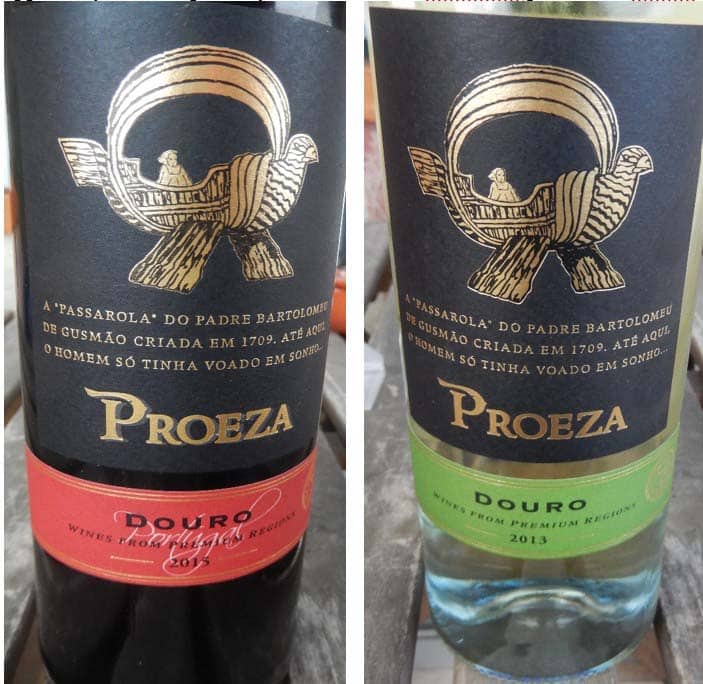
- 1720. Expulsion of all Portuguese priests from Bombay by British governor Charles Boon.
- 1724. Christian religion was banned from China, where it never acquired many followers or influence, and missionaries were deported to Canton.
- 1729. Final relinquishing of Mombaça, East-Africa.
- 1739. Maratha occupation of Baçaim (Bassein), and the ‘province of the North’, West India (roughly between Bombay and Daman (1737-1740).
- 1749. The English seize São Tomé de Meliapor (Mylapur) on the South-East (Coromandel) coast of India, bringing the Portuguese influence in trade activities in the Bay of Bengal to a close.
- 1750. Treaty between Portugal and Spain is signed in Madrid settling the border differences in South America between the two countries.
- 1755. On the 1st of November, All Saints Day, Lisbon, the largest city and capital of the Portuguese Empire, was strongly shaken by an earthquake followed by a tsunami which killed between 60,000 and 90,000 people and destroyed eighty-five percent of the city. Other parts of Portugal are also hit, although with less damages.
- The Douro wine region is officially established by the Marquis de Pombal, after only Tuscany (Italy) in 1716 and Tokay (Hungary) in 1737, together with the publicly owned company destined to govern and regulate the Port Wine trade.
- 1759. Suppression of the Portuguese branch of the Society of Jesus by Pombal.
- 1761. The Marquis de Pombal abolishes slavery in European Portugal (and not in the colonies) – some say only the arrival of new slaves on Portugal’s shores would have been forbidden then – but apparently the process of freeing all slaves and stop the traffic only formally culminated in 1869 or 1878. Slave trade had meanwhile been abolished in 1836. Motivations mentioned in the law include mercantilist considerations, the pernicious competition with low-skilled native labour force, needed labour force in the colonies which should not be deviated to the motherland, and less so the illuminist, abolitionist considerations spreading in Europe at that time.
- 1769. The Marquis de Pombal, after having nominated head of the inquisition his own brother, transfers this institution from the papal to royal jurisdiction.
- 1773. The Marquis de Pombal promulgated the Lei do Ventre Livre (Free Womb Law) declaring free in Portugal all children born from slaves, and all slaves whose great grandmother was already a slave.
- 1769. Mazagão, last Portuguese stronghold in North Africa (today’s Moroccan El-Jadida) since 1502 or 1514, is evacuated by orders of the Marquis de Pombal, in reaction to a siege, and its entire population of ca. 2000 individuals resettled to the Amazonian region in Brazil, where they found Nova Mazagão, in today’s territory of Amapá.[1]
- 1770. Extinction in Lisbon of Casa de Ceuta, the first Portuguese overseas institution, in charge of supplies to the Portuguese settlements in Morocco.
- 1777. Treaty of Santo Ildefonso is signed between Portugal and Spain giving Brazil roughly its current borders.
- 1789. Abortive plan for proclaiming the independence of Brazil was suffocated in Minas Gerais.
- 1791. Portugal was the first neutral nation to establish diplomatic ties with the United States of America. Portugal was among the first countries to recognize the USA following the revolutionary war, during which Portugal kept its neutrality.
- 1807. British decision to abolish the slave trade.
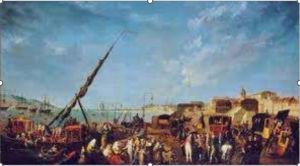
- 1808. Opening up of Brazilian harbours to foreign vessels.
- 1809. “The Portuguese crown granted authors and inventors exclusive rights to their works in Brazil for 14 years. Based on the English Statute of Monopolies, the law – only the fourth in the world to protect intellectual property – was aimed at developing the colony, where the court had fled to escape Napoleon. But by the mid-20th century Brazil had come to regard intellectual property – at least the foreign kind – as a threat.” (The Economist November 3rd, 2012)
- 1810. Portugal reluctantly assumes first commitment to abolish slave trade in the yet undefined future in the context of a treaty with the UK, whereby British products are granted privileged access to all Portuguese territories, namely to Brazil, even when compared with national products.
- United Kingdom of Portugal, Brazil and the Algarves, with capital in Rio de Janeiro,
- Gomes Freire de Andrade is executed at Forte S. Julião da Barra, and several others at Campo dos Mártires da Pátria, vulgo Campo de Santana, in Lisbon, mefor conspiracy and revolt against English domination, personified by William Beresford, de facto regent of the realm.
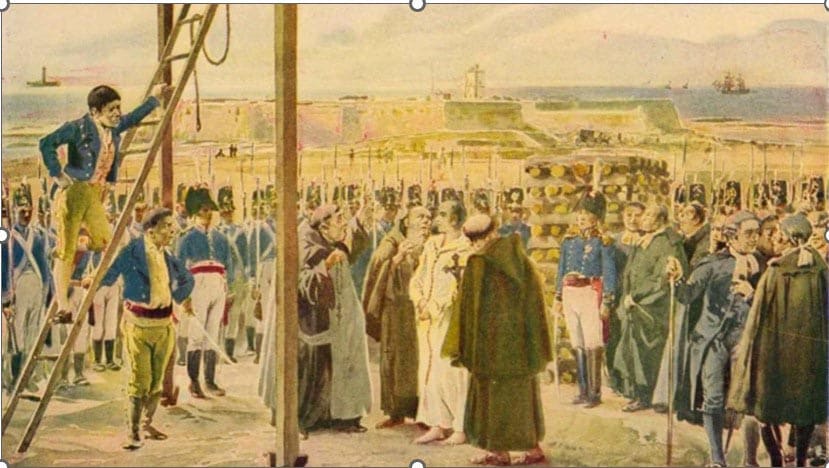
<
- Sinédrio, secret revolutionary association was formed in Oporto, mainly by lawmen and free masons, derived its name from Supreme Jewish Court/Assembly, and was relevant in preparing the 1820 uprising, after which it disbanded.
- 1820. Liberal military and civilian uprising in Porto against absolutism, subordination to Brazil – they resented to be ‘a colony of a colony’ – where the royal family resided, and British control, namely of the armed forces, which results in an indirectly voted constitutional assembly, whose text was in 1821 approved by the monarch, D. João VI.
- 1821. King João VI, and most of the the Portuguese royal family return to Portugal from Brazil, where it had laid the foundations of the Banco do Brasil, the Botanical Garden, the Medical School, the National Library, the National Printing Office, the Army Arsenal, the Military Academy and the Art School, among many other institutions that would prove important to sustain the independence of Brazil. Extinction of the Inquisition in Portugal.
- 1822. Pedro, the son whom the Portuguese king had left behind one year before as regent of the Kingdom of Brazil, within the United Kingdom of Portugal, Brazil and the Algarves, declares the independence of Brazil, becoming his first emperor, Pedro I.
1823-24. Vilafrancada and Abrilada, two absolutist uprisings against the constitutional order from only a couple of years earlier.
- 1825. Portugal recognizes Brazil’s independence.
1828-1834. Portuguese Civil War, or the War of the Two Brothers, was a war between progressive constitutionalists, led by Pedro, and authoritarian absolutists, led by his younger brother Miguel, over royal succession. The constitutionalists won.
1828-1830. Liberal forces gather in Angra (Azores), joined by the remaining islands of the archipelago, and disembark near Porto, where they and the resistant population are submitted to a long and painful siege
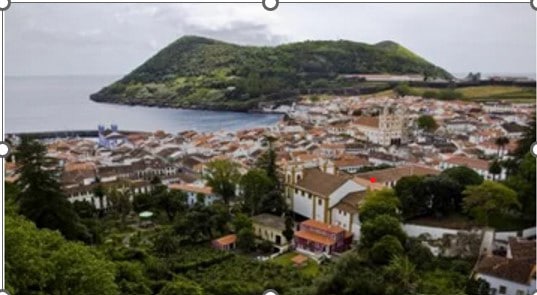
- 1831. Pedro I steps down as emperor of Brazil, travels to Portugal and becomes here king Pedro IV.
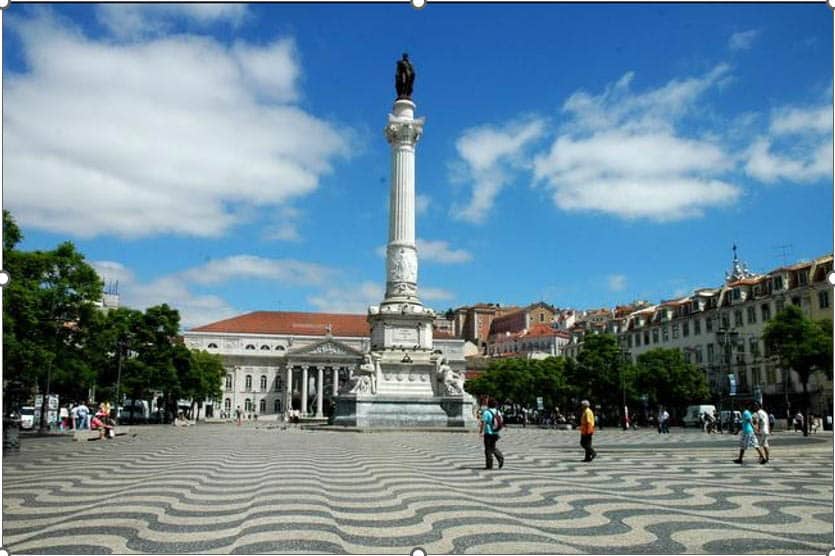
- 1834. Abolition of the religious orders.
- 1835. “All the religious orders including the Jesuits, Augustinians, Franciscans, Dominicans working in Portugal and India including Bengal were suppressed and the Portuguese religious missionaries of Bengal including the Augustinians had to either leave India or get married and quit religious profession.” (Malekandathil 2013, p.196)
- 1836. Prime minister Sá da Bandeira abolishes slave (overseas) trade.
- 1849. Assassination by 7 Chinese men, allegedly hired by Canton and Macau mandarins apparently not pleased with João Maria Ferreira do Amaral’s actions as governor of Macau. He had raised taxes, directed the proceeds from Chinese mandarins to the Portuguese Macau treasure and affirmed Portuguese authority there. This triggered a short military conflict between Macau/Portugal and China.
- Regeneration movement consolidates the liberal regime.
- 1852. Abolition of the death penalty for political cases.
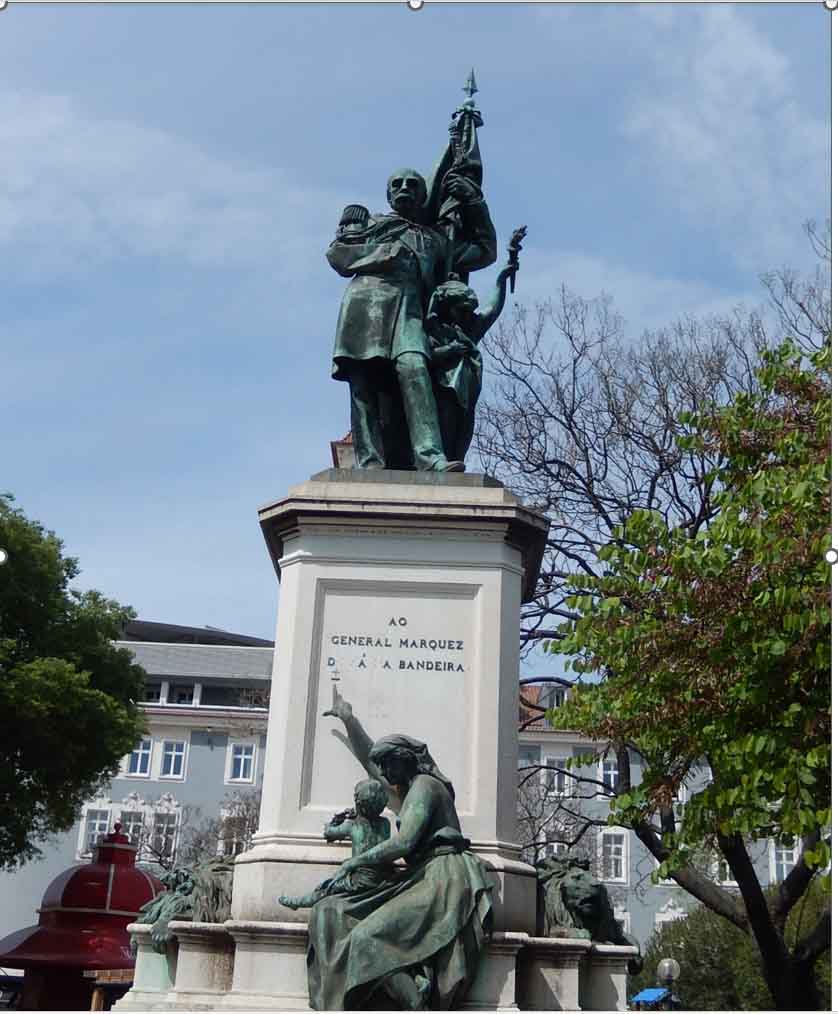
- 1869. The Marquis de Sá da Bandeira abolishes slavery in all Portuguese empire, declaring April 29, 1878, as the last day anyone could still be a slave. It is said that 1930 there were still people alive who were born slaves in Lisbon.
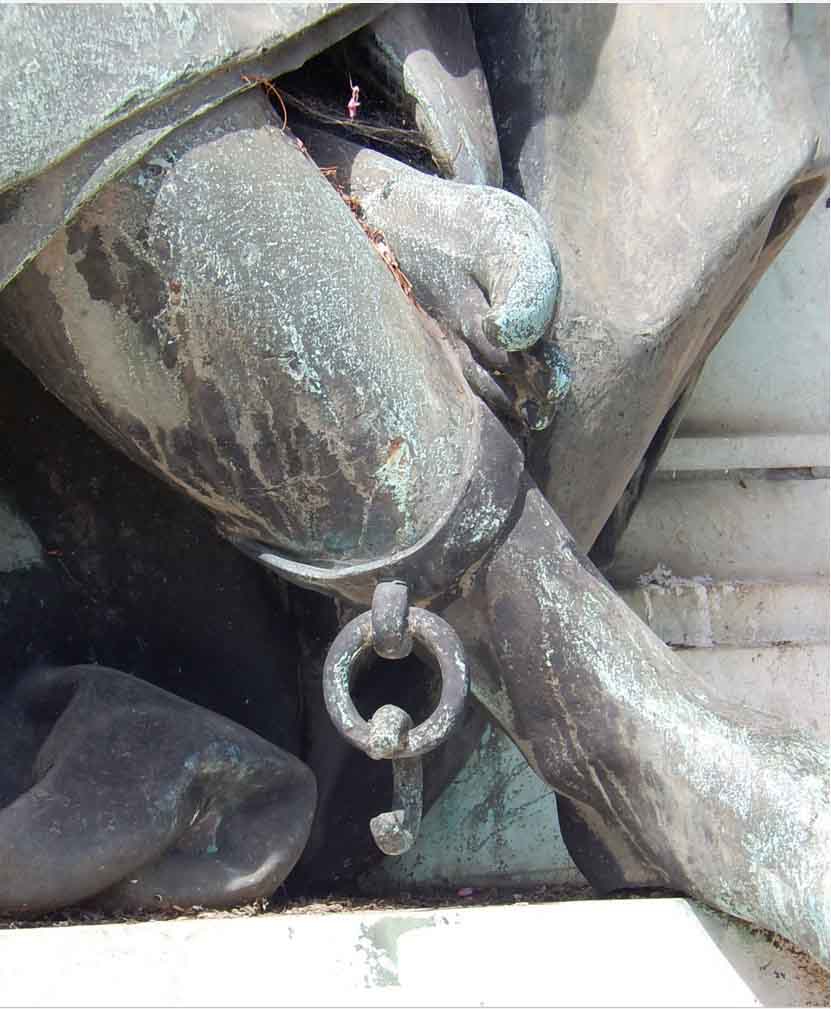
- 1873. Last traces of persecution against Christians removed in Japan, with, among other actions, their release from prison or deportation.
- 1888. Brazil abolished slavery.
- 1890. The British Ultimatum delivered by the British government to Portugal, in breach of the Treaty of Windsor of 1386 between the two countries, forcing the retreat of Portuguese military forces in the land between the colonies of Mozambique and Angola (present-day Zambia, Zimbabwe and Malawi). The area had been claimed by Portugal, which had included it in its “Pink Map” (Mapa cor-de-rosa), but this clashed with British aspirations to create a railroad link between Cairo and Cape Town, thereby linking its colonies from the north of Africa to the very south. When Portugal acquiesced to British demands, it was seen as a national humiliation by republicans in Portugal, who denounced the government and the King as responsible for it. The government fell, and António de Serpa Pimentel was appointed Prime Minister. On August 20 1890 the Treaty of London was signed between Portugal, Germany and Great Britain, defining the territorial limits of Angola and Mozambique. The treaty was published in the Diário do Governo (Government Diary) on August 30 and presented to the parliament that same day, leading to a new wave of protest and the downfall of the government. The Ultimatum inspired the lyrics of the current Portuguese National Anthem, A Portuguesa, which originally read ‘march against the britons’, before it was changed into current version ‘march against the canons’.
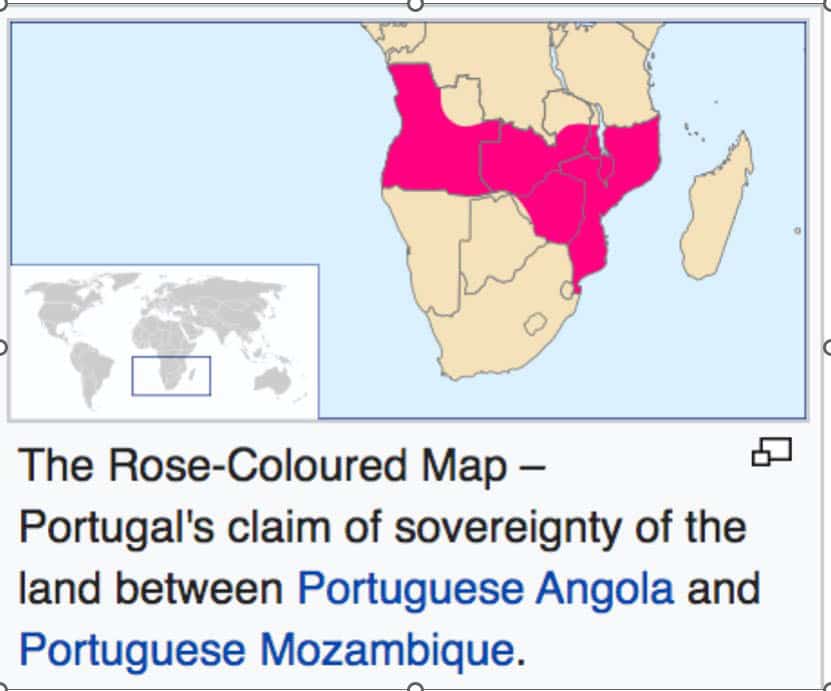
- 1961. The Portuguese army was involved in armed action in its colony of Portuguese India (Goa, Damão and Diu) but barely resisted an Indian invasion. The operations resulted in the defeat of the isolated and relatively small Portuguese defense force which was not able to resist a much more numerous enemy. The outcome was the loss of the last Portuguese territories in the Indian subcontinent and another traumatic event to the Portuguese army, which was never forgiven by the dictator Salazar. Salazar had demanded resistance till death, but only a few dead resulted from the scarce fight there was.
- ‘Carnation revolution’. On the 25th of April, troops mainly in the greater Lisbon area left their barracks led by officers discontent with the many and long African campaigns, and overthrew the Marcelo Caetano dictatorial government.
- 1975. Angola, Mozambique and Guinea-Bissau gain their independence from Portugal after more than a decade of guerrilla war. Hundreds of thousands of Portuguese leave hastily and the Portuguese army leaves behind thousands of local men who had fought in its ranks. By this time, the west-African archipelagos Cape Vert and Tomé & Principe won their independence too, but without armed conflict. Estimated casualties during the 13 years of war on all fronts range from 8 to 9,500 deaths of Portuguese soldiers, depending on source. The sources are not clear as to the inclusiveness of these numbers. Probably they exclude civilians of all races and sides, and refer only to regular army casualties in combat and other combat related circunstances.[1] A lot more than these are wounded (estimated at 30,000) and suffer from post-traumatic stress. Portugal was the first European power on the African continent (Ceuta 1415) and the last to leave.
- 1986. Portugal becomes a member of the European Union, then the European Community.
- 1999. Handover of Macao (Macau) to the Peoples Republic of China as a special administrative region (the other one being Hong Kong since 1997). Macau was both the oldest and the last European colony in China.
- 2002. The half-island East Timor becomes the first new sovereign state of the twenty-first century. Alongside the Philippines, East Timor is one of only two predominantly Roman Catholic countries in Asia. Its first years have however been rather shaky with many internal divisions taken advantage of by its two big neighbours Australia and Indonesia.
- António Guterres, former prime minister of Portugal (1995-2002) for the Socialist party, is elected secretary-general of the United Nations.
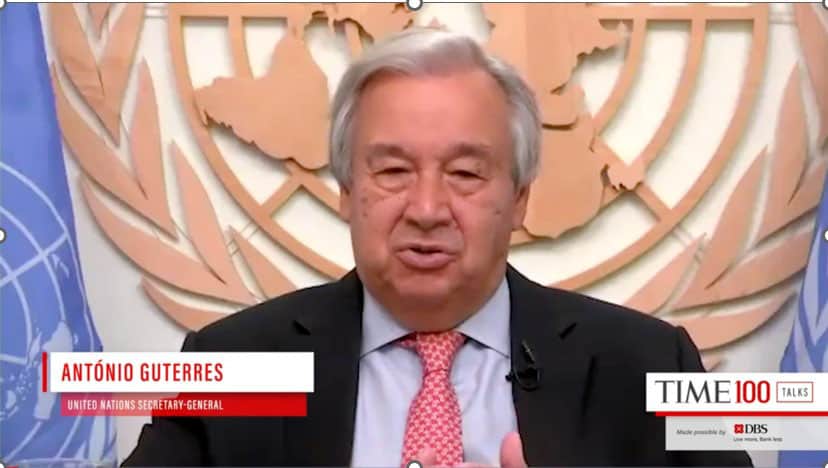

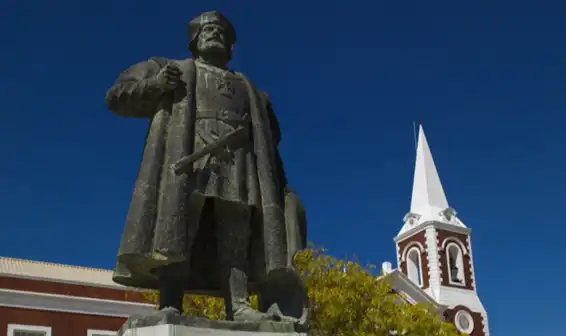

1 Comment
Virgílio A. P. Machado
Better title: “Chronology of Portugal”.